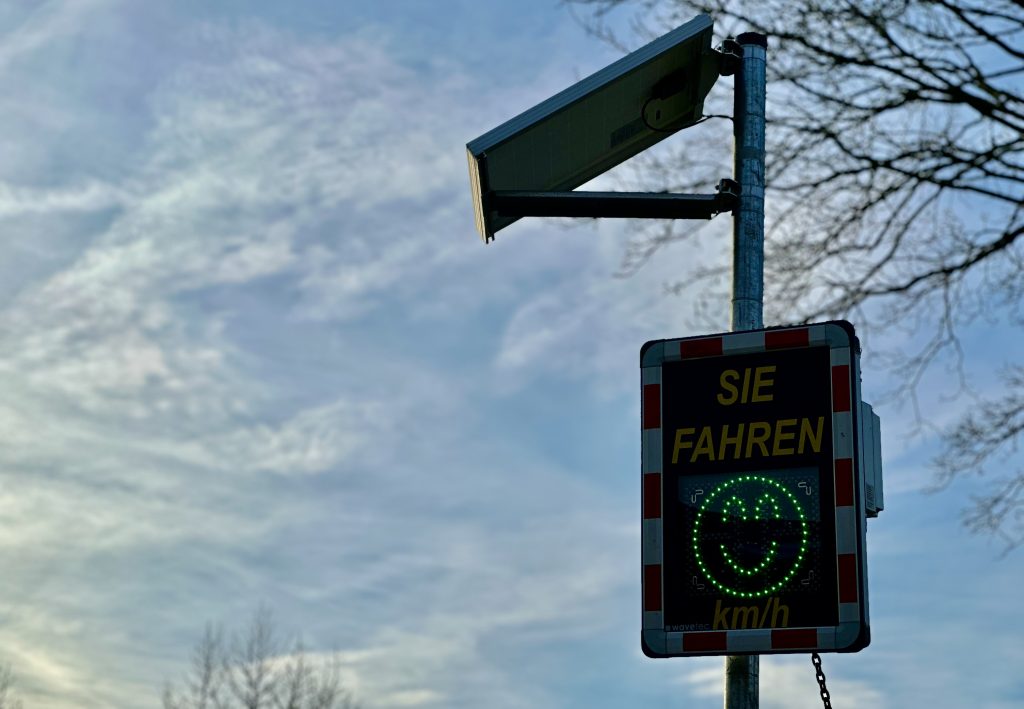This post is also available in Dutch.
It’s happened to the best of us: you are running late to a doctor’s appointment, so you drive 60 km/h in a 50 zone. You pass a speed camera and a ☹ appears. Immediately, you slow down and start to feel bad about having broken the rules. How can a simple drawing cause such strong emotions?
Human brains are hard-wired to recognize faces—especially emotional ones
Distinguishing a friend from an enemy has been a crucial factor for survival throughout evolution and might explain why we possess a specialized brain region for face processing. The fusiform face area is a small region found at the bottom of the temporal lobe and is most strongly activated when people are shown faces or shapes that resemble faces. Combined with other social cues, such as emotion, this efficient system guides our behaviors and decisions. In our day-to-day lives where we are flooded with information, emotion serves as an important indicator of where we should focus our attention. Indeed, studies show that we are faster at responding to emotional faces than we are to neutral ones. But what about face-like drawings such as emojis? Studies suggest that because we use these little images when sending text messages, we react to emojis as we do to regular faces. This explains why such an emoji might stand out more than another indication of speed.
Feeling watched influences your behavior (for the better)
Instead of emojis, other campaigns use other alternatives to fight undesirable behaviors. For example, a research group from Newcastle University has found that a simple poster representing human eyes in a dining hall successfully and drastically decreased littering. Twice as many students cleaned up after themselves when their behavior was being ‘watched’ by the eyes compared to when the poster portrayed a neutral picture of flowers. In a similar fashion, a large poster of human eyes has been shown to decrease bicycle theft in a hotspot area for thieves. This effect can also result from the reflection of your own eyes. In another experiment, children who were instructed to only take one candy bar from a bowl were much more likely to comply when they could see their own faces reflected in a mirror. Therefore, it seems that even the illusion of being watched during dishonest acts can make us reconsider our actions.
Slowing down for smiles
Coming back to the use of emojis as speed indicators, researchers in Finland and the UK have shown that speed indicators are effective in reducing speeding. When the speed indicators were removed, the average speed rapidly went back to normal, suggesting that there are no long-lasting effects. Also, over time, a process called desensitization is likely to occur: If you pass such a speed sign every day, you will react less strongly and possibly return to your old habits. Therefore, while emojis seem to be able to improve our behaviors temporarily, in the end, it is our responsibility to continue making better (and safer) choices.
Credits
Author: Helena Olraun
Buddy: Kim Beneyton
Editor: Christienne Damatac
Translation: Wessel Hieselaar
Translation editor: Felix Klaassen
Featured image: Helena Olraun
